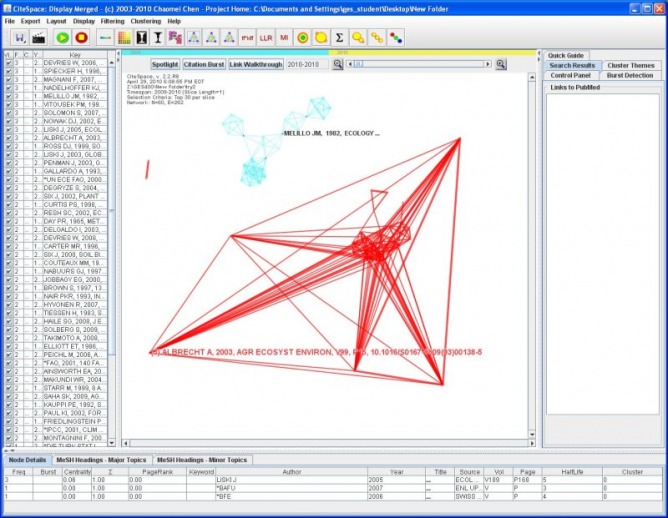Forest Sequestration Controversy: Old-Growth vs. Young-Growth Forests as Viable Carbon Offsets
Pivotal Article
A pivotal article found on a cite space search for forest carbon offsets
is “Carbon Sequestration in Tropical Agroforestry Systems” by Alain
Albrecht and Serigne T. Kandji. The article is about how agroforestry can
reduce CO2 concentrations in the atmosphere as well as discuss carbon
storage in some tropical forest systems. Agroforestry combines agriculture
and forestry to create integrated and sustainable land-use systems and, in
this case, used to capture and storage carbon. Agroecosystems play a
central role in the global carbon cycles and contain approximately 12% of
the worlds terrestrial C. In the tropics (Latin America, Southeast Asia,
and Equatorial Africa) complex mixtures of trees and agricultural corps
are widely practiced. These complex agroforestry systems collect carbon in
plant biomass as well as in the soil. This way of capturing carbon is also
considered to be cheaper than through other CO2 mitigating options.
However, there are still are a number of uncertainties about C storage in
agroforestry systems and its effect on climate change.
Some types of sub-topics (clusters) this article has been influential to include,
ecosystem biomass and carbon pools, carbon stock and sequestration, and
carbon contained in soil. These subtype clusters are using this article as
a means to make their research credible and solid knowledge. The article
is a review and cites many other players and thus is taking other peoples
research and making them a more solid or credible fact or knowledge. The
objective of this paper was to review the research and discuss the C
storage potential of a few agroforestry systems in the tropics.
is “Carbon Sequestration in Tropical Agroforestry Systems” by Alain
Albrecht and Serigne T. Kandji. The article is about how agroforestry can
reduce CO2 concentrations in the atmosphere as well as discuss carbon
storage in some tropical forest systems. Agroforestry combines agriculture
and forestry to create integrated and sustainable land-use systems and, in
this case, used to capture and storage carbon. Agroecosystems play a
central role in the global carbon cycles and contain approximately 12% of
the worlds terrestrial C. In the tropics (Latin America, Southeast Asia,
and Equatorial Africa) complex mixtures of trees and agricultural corps
are widely practiced. These complex agroforestry systems collect carbon in
plant biomass as well as in the soil. This way of capturing carbon is also
considered to be cheaper than through other CO2 mitigating options.
However, there are still are a number of uncertainties about C storage in
agroforestry systems and its effect on climate change.
Some types of sub-topics (clusters) this article has been influential to include,
ecosystem biomass and carbon pools, carbon stock and sequestration, and
carbon contained in soil. These subtype clusters are using this article as
a means to make their research credible and solid knowledge. The article
is a review and cites many other players and thus is taking other peoples
research and making them a more solid or credible fact or knowledge. The
objective of this paper was to review the research and discuss the C
storage potential of a few agroforestry systems in the tropics.
This picture was taken from CiteSpace©, which is a free website search engine, created to link scientific articles to a certain topic. This picture represents our search on carbon sequestration. Using this tool makes it easy to find articles cited most often on the topic. The highlighted article is the pivotal article linked to other corresponding clusters of articles via linked citation. The input data we used from CiteSpace© was downloaded from a carbon sequestration search executed on the Web of Knowledge. After the search was completed, we assessed which article was the most influential due to the number of times it was cited. The pivotal article was then dragged from the center to determine the clusters related to it.

